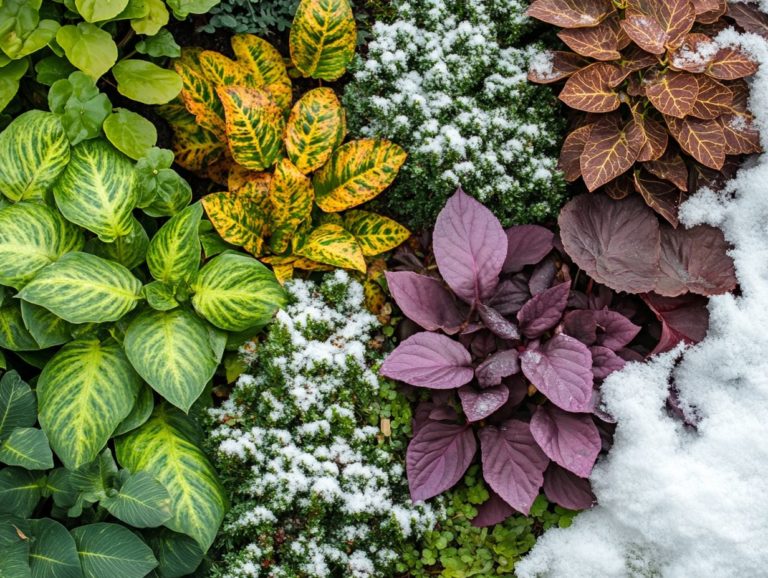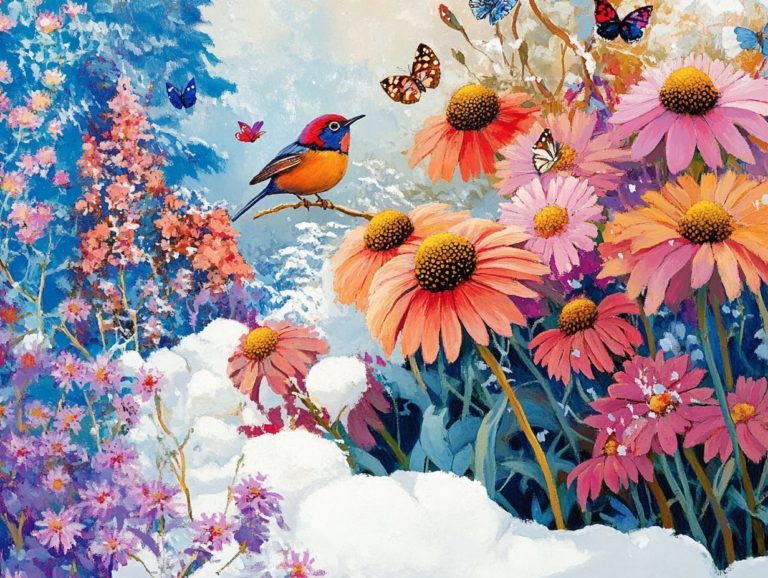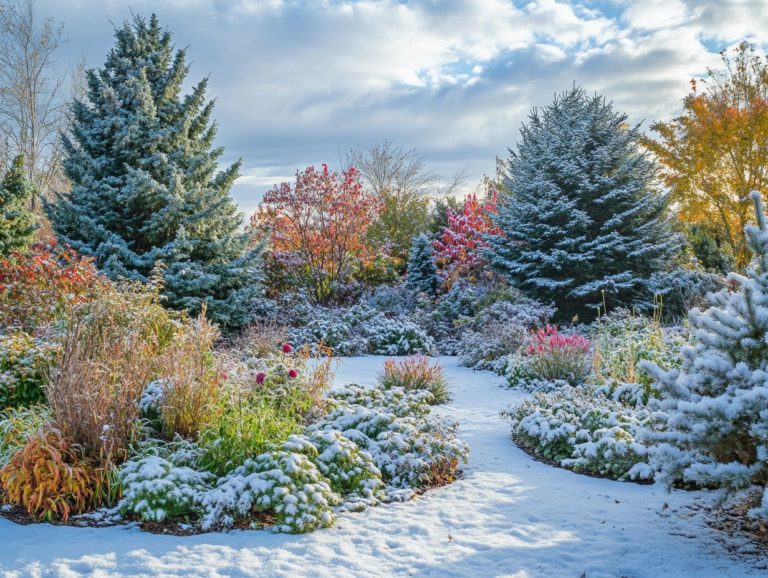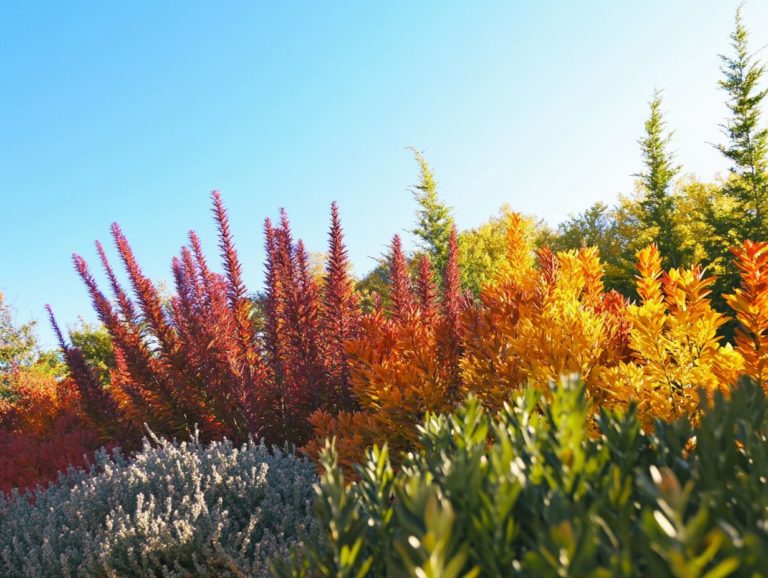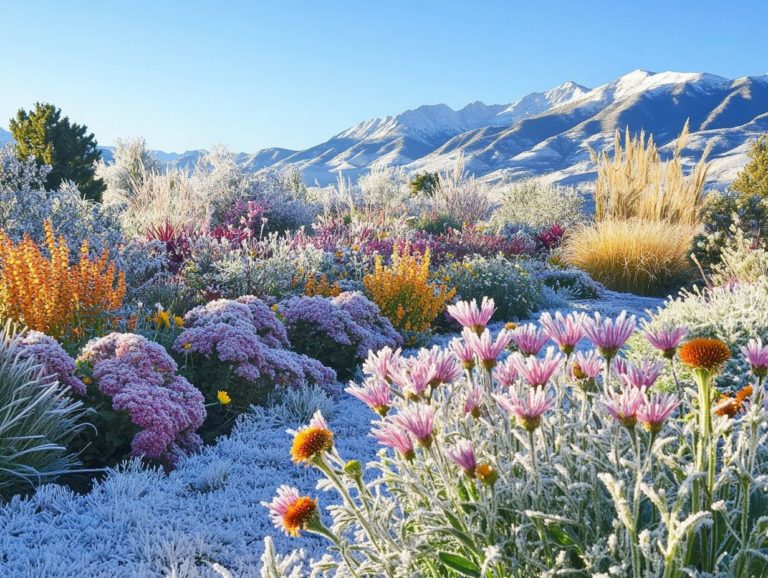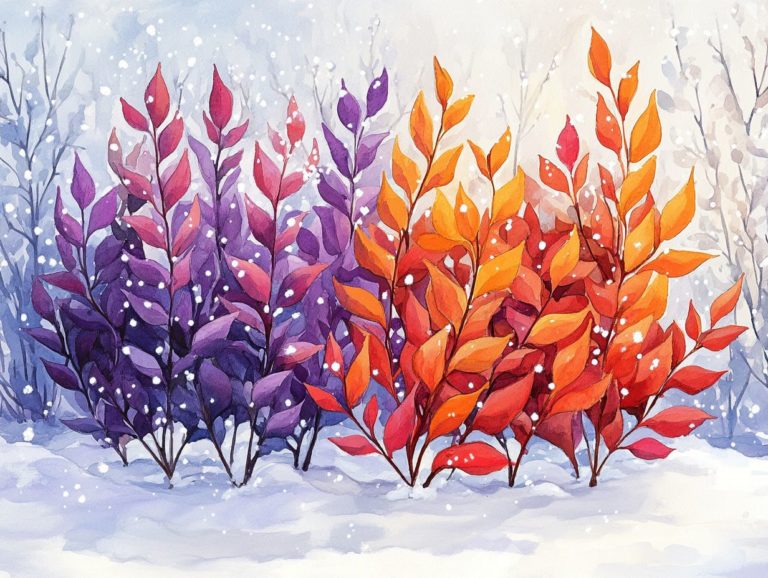Choosing Plants for a Cold-Climate Pollinator Garden
Pollinator gardens hold immense significance in bolstering local ecosystems, even in cold climates where harsh conditions may restrict plant choices.
These vibrant spaces not only enhance biodiversity but also create essential habitats for bees, butterflies, and various other pollinators.
You ll discover why pollinators are the superheroes of your garden, what factors to consider when selecting plants, and the best types to include.
You will also find practical tips for maintaining a flourishing garden that benefits both you and these vital creatures throughout the year.
Contents
- Key Takeaways:
- The Importance of Pollinator Gardens in Cold Climates
- Factors to Consider when Choosing Plants for a Cold-Climate Pollinator Garden
- Tips for Maintaining a Successful Cold-Climate Pollinator Garden
- Frequently Asked Questions
- What factors should I consider when choosing plants for a cold-climate pollinator garden?
- Can I include non-native plants in my cold-climate pollinator garden?
- What are some examples of cold-climate plants that attract pollinators?
- How can I ensure year-round blooms in a cold-climate pollinator garden?
- Are there any plants I should avoid planting in a cold-climate pollinator garden?
- Do I need to provide any special care for plants in a cold-climate pollinator garden?
Key Takeaways:
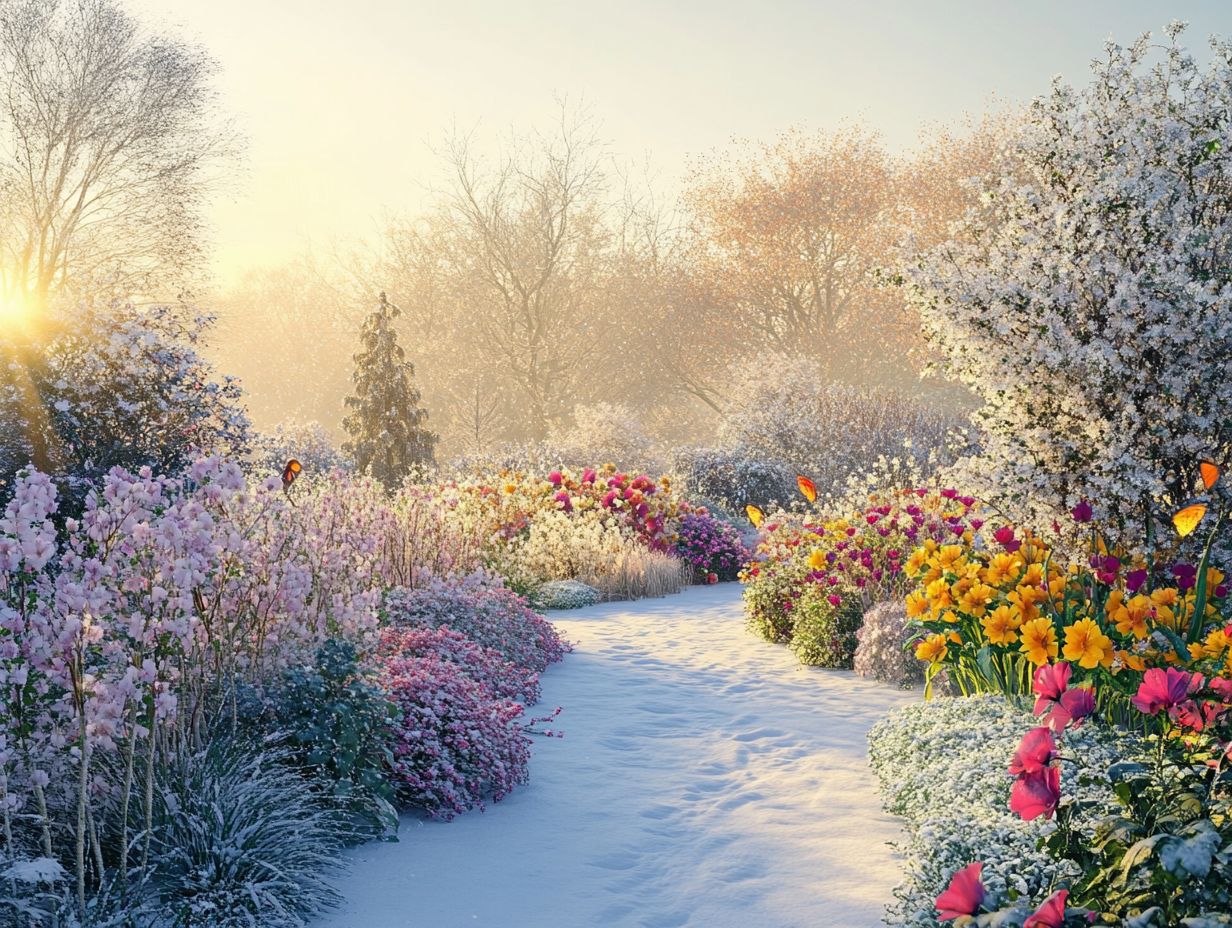
- Pollinators play a vital role in the success of cold-climate gardens, making it important to choose plants that attract and support them.
- When selecting plants for your cold-climate pollinator garden, consider their cold hardiness, adaptability, and attractiveness to pollinators.
- Including a variety of perennials, native plants, and early and late bloomers can provide a continuous food source for pollinators throughout the year.
The Importance of Pollinator Gardens in Cold Climates
Pollinator gardens are essential in cold climates, where harsh weather often restricts the diversity and availability of flowering plants. For those interested in enhancing their gardens, selecting cold-climate plants for urban gardens can help attract vital pollinators like butterflies, bees, and birds.
By using local plants, these gardens provide a sustainable habitat for wildlife while also aiding in the restoration of local ecosystems.
Gardening experts underscore the importance of crafting environments tailored to the unique needs of pollinators in colder regions, ensuring these critical species have consistent access to nectar sources and food throughout the blooming season.
Why Pollinators are Essential for Cold-Climate Gardens
Pollinators like butterflies and bees are vital for your cold-climate garden. To support them, consider making sustainable plant choices for cold climates. They play a crucial role in reproducing a variety of plants by transferring pollen, which is essential for seed production.
These remarkable creatures also boost genetic diversity among your flora, making plants more resilient to pests and shifting climates.
In cold-climate regions, where growing seasons can be brief and challenging, having a diverse range of pollinators like hummingbirds and various beetle species is especially important.
They actively contribute to the health of your garden ecosystem, fostering a balance that benefits both native and introduced species.
These pollinators depend on a variety of plants for food and shelter, creating a symbiotic relationship that highlights the importance of cultivating gardens rich in biodiversity.
Factors to Consider when Choosing Plants for a Cold-Climate Pollinator Garden
Choosing the ideal plants for pollinators in cold climates requires a keen understanding of several key factors, including cold hardiness, adaptability, and the unique needs of pollinators.
By carefully selecting plants that thrive in your local gardening conditions, you can create a vibrant sanctuary that not only flourishes but also effectively attracts and supports a diverse array of pollinator species.
Cold Hardiness and Adaptability
Understanding cold hardiness, defined as a plant’s ability to survive low temperatures, and adaptability is vital when selecting plants for cold climate community gardens in your cold-climate pollinator garden.
These factors play a significant role in determining how well plants can not only survive but thrive in challenging weather conditions.
Cold hardiness zones, which range from 1 to 13, indicate the minimum temperatures that a plant can tolerate. This knowledge helps you choose species that will endure your local climate.
For example, if you re in Zone 3, you ll find that hardy varieties like purple coneflower and bee balm can truly flourish.
In Zones 5 and 6, you can expand your options even further to include delightful choices like black-eyed Susan and Joe Pye weed.
By selecting the right plants based on these zones, you ensure they can withstand harsh winters while attracting essential pollinators like bees and butterflies.
This not only contributes to a thriving ecosystem but also creates a garden that becomes a buzzing haven for wildlife.
It’s crucial to match the right plants with their specific needs, ensuring your garden not only survives but thrives in all its vibrant glory.
Get started today and watch your garden flourish!
Attractiveness to Pollinators
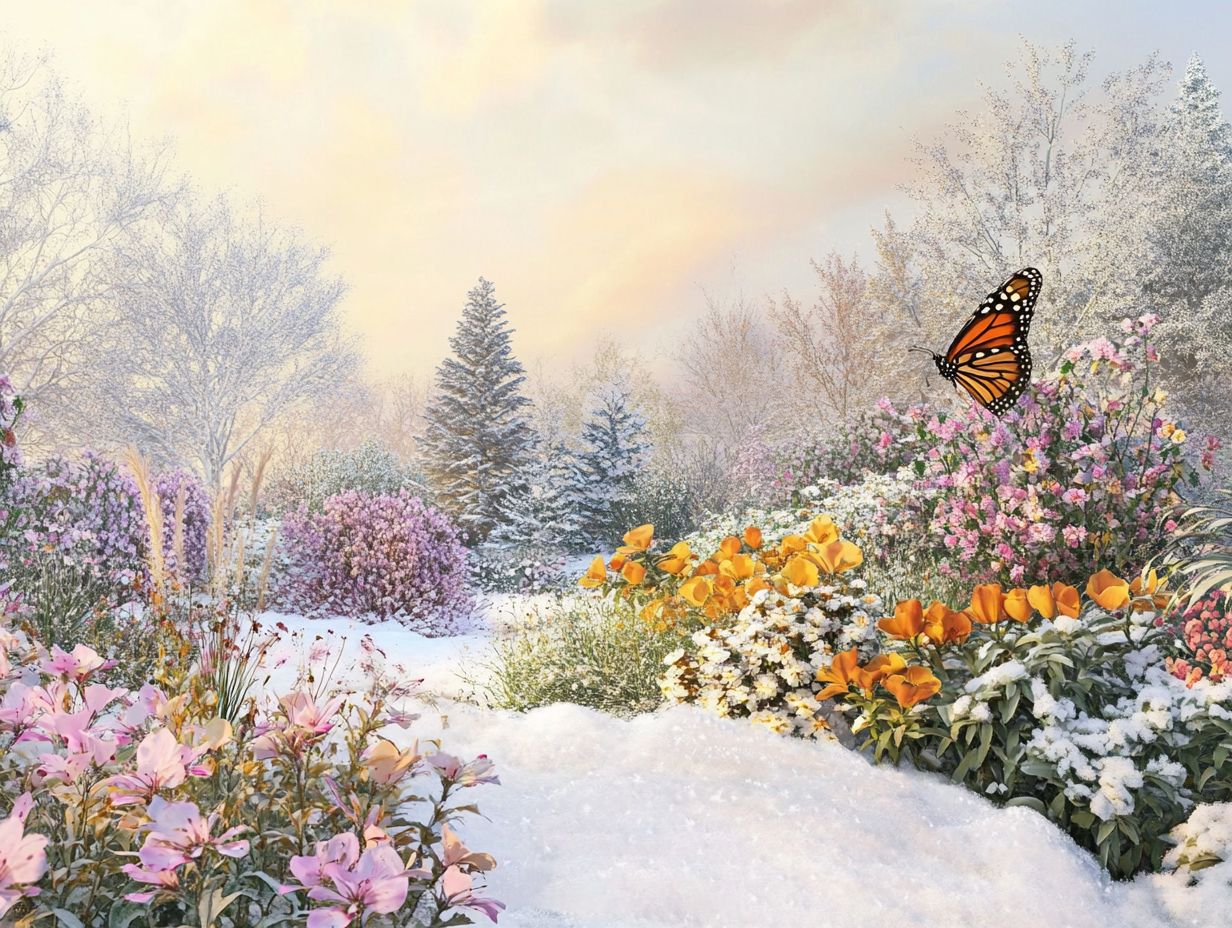
The allure of plants to pollinators can significantly impact the success of your cold-climate garden. By choosing plants for a cold-climate rock garden that are pollinator-friendly and provide ample nectar sources throughout the blooming season, you enhance your chances of attracting a delightful variety of pollinator species.
Bright colors, particularly vibrant yellows, blues, and purples, resonate beautifully with bees and butterflies. These colors signal the presence of the nectar-rich rewards they crave.
Many flowering plants also emit sweet fragrances. These olfactory lures draw pollinators from afar.
Blooming patterns are essential for attracting pollinators. Staggered flowering periods ensure a continuous food supply, fostering biodiversity and vitality in your garden ecosystem.
By incorporating these thoughtful characteristics, you can cultivate a vibrant, thriving environment that not only supports pollinator populations but also elevates the overall beauty of your outdoor spaces.
Types of Plants to Include in a Cold-Climate Pollinator Garden
Incorporating a diverse array of plant types ranging from native plants to flowering perennials and larval host plants is essential. This thoughtful selection will cater to the varied needs of different pollinator species, ensuring a thriving ecosystem right in your backyard.
Perennials
Flowering perennials are essential for your cold-climate pollinator garden. They offer a steady stream of blooms and reliable nectar sources that help sustain pollinator populations year after year. For more information, check out this resource on understanding plant selection for cold-climate design.
In northern regions, you’ll find resilient varieties like the brilliant purple coneflower and the cheerful black-eyed Susan. They make their grand entrance early in the summer, attracting bees and butterflies with their vivid colors and abundant pollen.
As the season progresses, resilient asters and sedums join the party. This ensures that pollinators have access to sustenance well into the fall.
These plants do more than just provide nourishment; they play a crucial role in creating diverse habitats. This helps maintain the delicate balance of local ecosystems. Enjoy a vibrant display while helping the environment thrive!
Native Plants
Incorporating native plants into your cold-climate pollinator garden is a remarkable way to support ecosystem restoration. By providing essential food and habitat for local wildlife, you are creating a sanctuary for pollinators that have evolved alongside these plants for wildlife habitat in cold climates.
These indigenous species are naturally suited to your local soil types, weather patterns, and ecosystems. This allows them to thrive with minimal upkeep.
This choice not only reduces the need for chemical fertilizers and pesticides, but also aligns your gardening efforts with nature’s rhythm. When you choose native plants, you re not just beautifying your space; you re fostering a resilient environment that promotes biodiversity.
These plants serve as vital food sources and nesting sites for a variety of native wildlife, including bees, butterflies, and birds. By crafting habitats rich in local flora, you contribute to the overall health of the ecosystem.
This effort ensures that essential symbiotic relationships continue to flourish, which is increasingly critical given the challenges of habitat loss and climate change. Your choices in the garden can make a significant impact.
Early and Late Bloomers
In a cold-climate pollinator garden, it’s crucial to include both early and late bloomers. This strategy provides nectar sources throughout the growing season and ensures continuous support for a diverse array of pollinator species. For more guidance, consider choosing the right plants for cold climates.
Take early bloomers like crocuses and snowdrops, for example. They bravely poke through the snow, offering essential nourishment to bees that are just shaking off their winter slumber.
On the flip side, late bloomers such as asters and sedums continue to provide sustenance as summer gracefully gives way to fall. This allows pollinators to stock up on energy before the chill of winter arrives.
By carefully planning your garden s blooming season, you not only enhance its visual appeal but also support a flourishing ecosystem. This fosters a harmonious relationship between your plants and their pollinator partners, encouraging a cycle that maintains biodiversity and contributes to a thriving garden.
Start creating your pollinator garden today!
Tips for Maintaining a Successful Cold-Climate Pollinator Garden
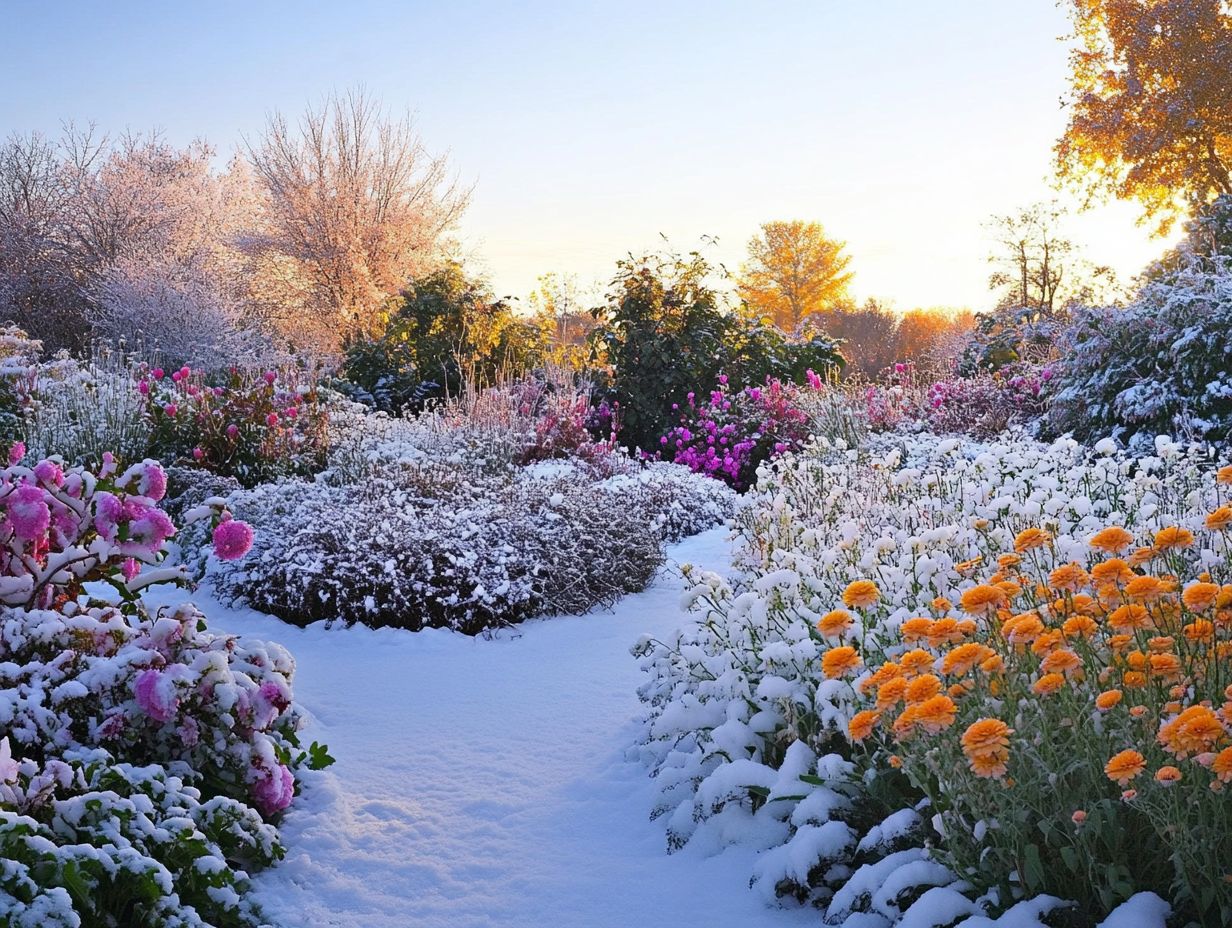
To have a successful cold-climate pollinator garden, regular maintenance is essential. This includes proper watering, fertilization, and pest management.
Proper Watering and Fertilization
Watering and fertilization are vital for your garden’s health. These practices ensure plants get the nutrients needed to thrive and attract pollinators.
Use deep watering techniques for strong roots. Organic fertilizers from compost enhance soil health and reduce chemical runoff, helping nearby pollinators.
Mulch around plants to retain moisture and improve soil structure. Include various native plants that bloom at different times for a continuous food source.
Managing Pests and Diseases
Managing pests and diseases is crucial for plant health and pollinators. Use organic gardening methods to protect these vital species.
Use smart pest control methods to keep your garden thriving. Beneficial insects like ladybugs help control pests without harmful chemicals.
Choose organic solutions, such as neem oil or insecticidal soap. This keeps your garden safe for all creatures, helping them coexist harmoniously.
Creating a Year-Round Habitat for Pollinators
Create a year-round habitat tailored to various pollinator needs. This fosters a sustainable garden ecosystem.
Incorporate native plants that bloom throughout the seasons. Structures like bee hotels provide essential winter habitats.
Add water features and varied plant heights for beauty and resources for beneficial insects. With careful planning, your garden can thrive and support local wildlife.
Frequently Asked Questions
What factors should I consider when choosing plants for a cold-climate pollinator garden?
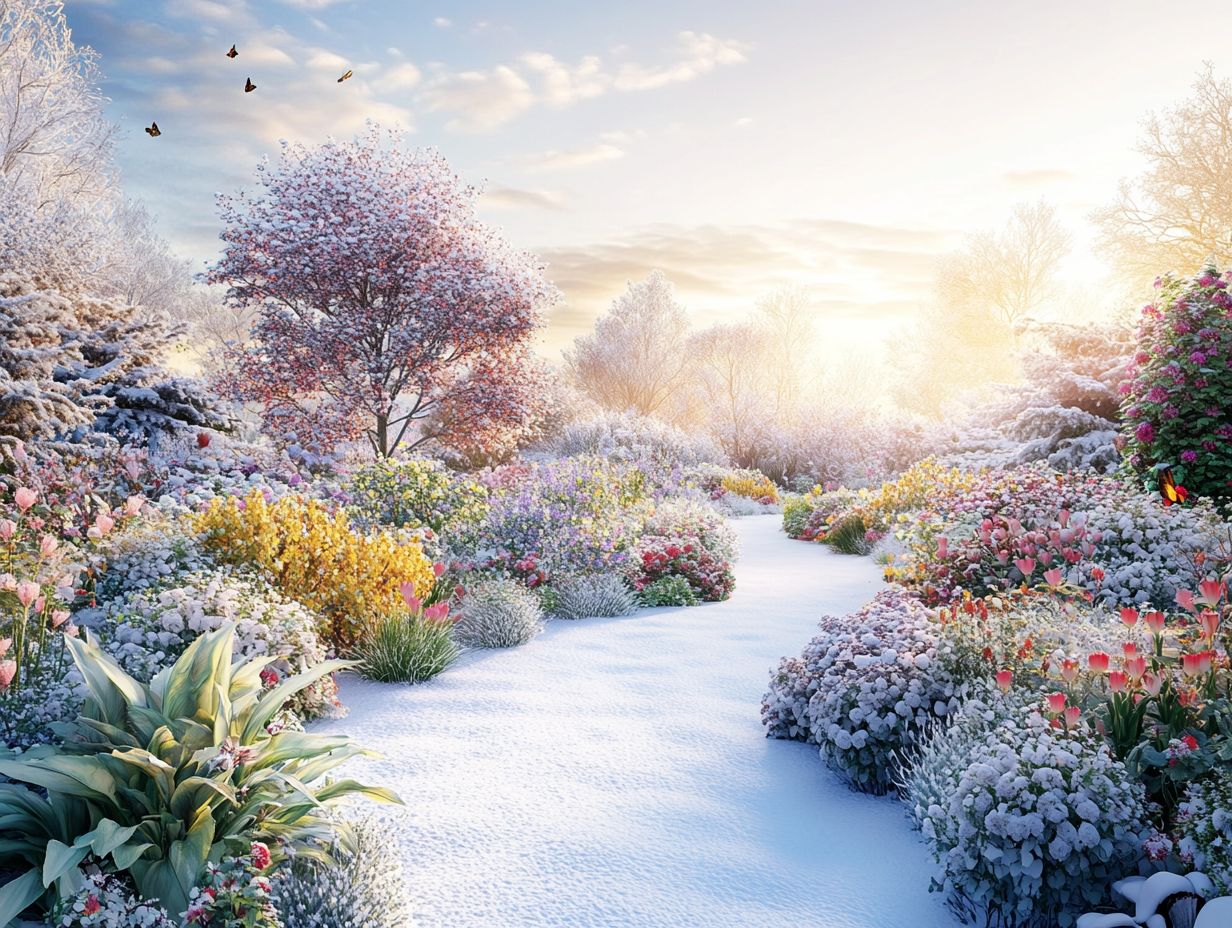
Consider hardiness zone, soil type, sunlight exposure, and pollinator preferences when choosing plants. Opt for plants for an eco-friendly cold garden that are native to your region and can survive the cold.
Can I include non-native plants in my cold-climate pollinator garden?
Yes, you can include non-native plants if they are not invasive and can tolerate the cold. However, prioritize native plants, as they are better suited to the local environment and benefit pollinators more.
What are some examples of cold-climate plants that attract pollinators?
Here are some fantastic cold-climate plants that attract pollinators:
- Milkweed
- Coneflowers
- Bee balm
- Wild bergamot
- Hummingbird mint
- Goldenrod
These plants provide nectar, pollen, and shelter for a variety of pollinators like bees, butterflies, and hummingbirds.
How can I ensure year-round blooms in a cold-climate pollinator garden?
To enjoy blooms all year round, select a variety of plants that bloom at different times. This strategy ensures there s always food available for our pollinator friends throughout the growing season.
Consider including early-blooming bulbs and late-blooming perennials to extend the blooming period even further!
Are there any plants I should avoid planting in a cold-climate pollinator garden?
Avoid plants that are not originally from your area or those that can take over the ecosystem. These can harm local wildlife and disrupt the natural balance.
Also, steer clear of any plants treated with pesticides. Make sure to check which plants could harm our buzzing friends!
Do I need to provide any special care for plants in a cold-climate pollinator garden?
Regular watering and weeding are essential. Protect your plants from extreme weather too!
You can do this by adding mulch for insulation during winter and providing extra water during hot, dry spells. Regularly check and remove any pests that might harm pollinators.

